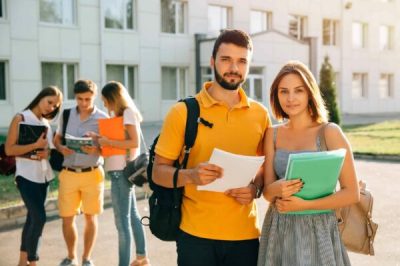Student Visa
Student Visa
The Student visa, subclass 500, was introduced on 1 July 2016 as part of the Simplified Student Visa Framework (SSVF) reforms. The SSVF reforms merged seven subclasses of student visas, that previously applied to different education sectors, into the one subclass 500 visa.
Overseas students who wish to study in Australia now apply for the Student visa, subclass 500, regardless of which education sector they are enrolled in.
Holders of the Student visa can undertake an eligible course of study at an Australian educational institution and may bring family members to Australia.
Some of the criteria for the grant of a Student visa include enrolment in a course of study in Australia, showing evidence that you have sufficient funds to cover the costs and expenses for yourself and any accompanying family members during your stay in Australia, and maintaining Overseas Student Health Cover (OSHC) while in Australia unless one of the exemption categories apply. You must abide by the conditions of your student visa.
Examples of the types of evidence you may provide to demonstrate financial capacity could be documentation showing that your spouse or de facto partner or parents have a specified annual income, or documents evidencing sufficient funds to cover travel costs and the first 12 months’ living expenses and tuition fees for yourself and each family applicant.
Unless you are a citizen of New Zealand, the United Kingdom, the Republic of Ireland, Canada or the United States of America, you may need to achieve a certain minimum level of English language proficiency to be eligible for a Student visa.
Applicants for a Student visa also have to show that they meet the Genuine Temporary Entrant requirement. A statement is to be written by the applicant speaking to his or her intention to stay in Australia temporarily, supported by documentation evidencing the stated claims or the applicant’s incentive to return overseas.
In assessing the application for a Student visa, the Department of Home Affairs will consider the applicant’s circumstances and immigration history, the intentions of a parent, legal guardian or spouse if the applicant is a minor, as well as any other relevant matter.
Primary visa holders can generally work 40 hours work per fortnight (or biweekly) while their course is in session. When the course is not in session they may work unlimited hours. Students who have commenced a doctorate course, or a master by research program, may work unlimited hours after they begin their postgraduate research course.
Once the primary student has commenced their course of study in Australia, family members may undertake 40 hours of work a fortnight. Family members of students who have commenced a master by research or coursework, or a doctorate degree, may be permitted to work unrestricted hours. Other benefits of holding a Student visa is that you may travel outside of Australia and return to Australia as many times as you wish while the visa is valid.
For further information, please contact Tamas Immigration. We will be happy to assist with advice on additional visa criteria, and how that applies to your particular circumstances. You can also learn more about your visa options and how to meet the Australian visa and migration requirements.
Start your immigration journey with the support of an experienced registered migration agent.
We are passionate about helping you make your Australian temporary visa application or plans for permanent migration a success.

